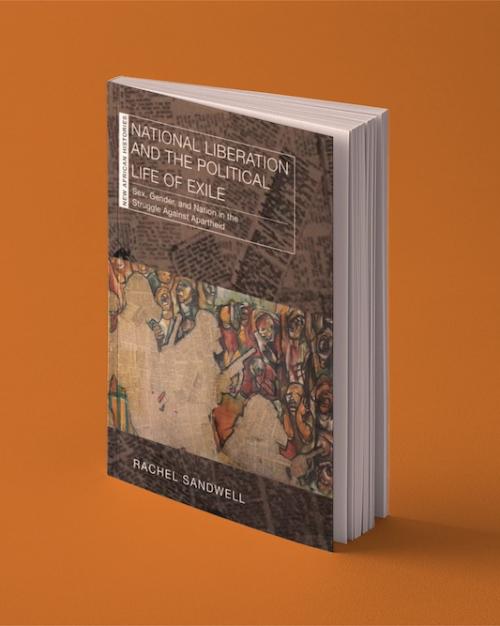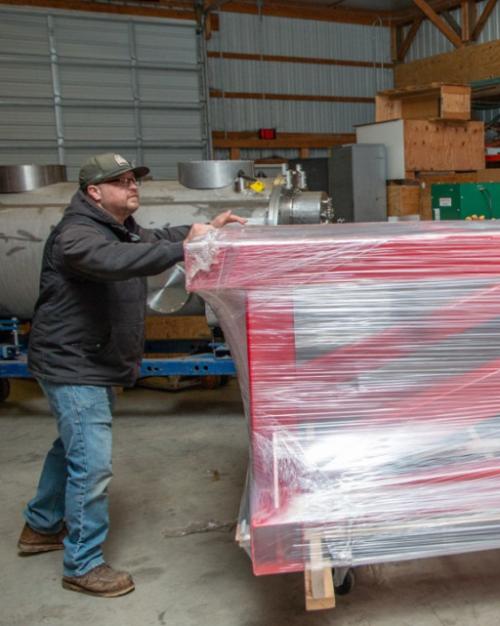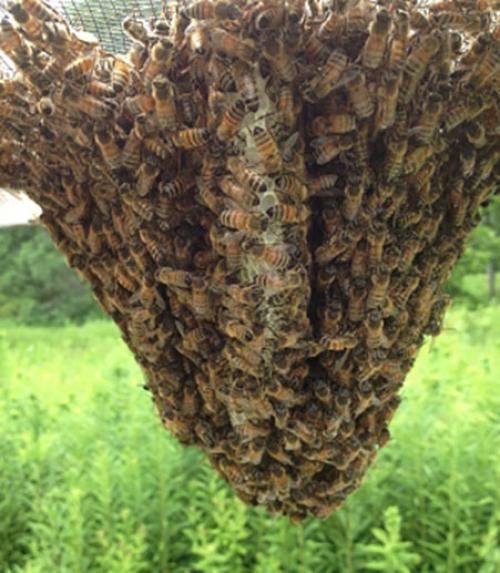New research helps answer a long-standing mystery of how honeybees sense the size and strength of their colony, a critical cue for the bees to switch from investing solely in survival to also investing in reproduction.
In a paper published May 3 in the Journal of Experimental Biology, a Cornell-led research group reports on how workers detect that their colony has reached a threshold to invest in a special type of reproductive comb.
In honeybees, the first sign that a colony can “afford” to invest resources in reproduction, as opposed to making investments only in survival and growth, is when workers begin to build a special type of beeswax comb, drone comb, used for rearing drones (reproductive males). Like pubescent humans, a colony that is building drone comb is not yet fully reproductive, but its workers have detected that the colony is strong enough to begin investing resources into reproduction for use in the future. Bees only begin building drone comb once their colony has enough workers, about 4,000. But how do the workers detect that their colony is large enough?
The researchers – neurobiology and behavior doctoral student Michael L. Smith, Phoebe A. Koenig ’16, and Harvard University doctoral student Jacob M. Peters – experimentally tested the effect of three possible cues that would trigger bees to begin constructing cells of beeswax comb used for rearing drones. These potential signals included worker density, volatile pheromone concentration and nest temperature. After experimentally increasing each of these cues, they measured how much drone comb the bees then built. They found that only increasing worker density induced workers to build a higher proportion of drone comb relative to a control. Both higher temperature and higher concentration of volatile pheromones had no effect on the colony’s comb building.
The experiments disproved a hypothesis that a volatile chemical cue rises as a colony becomes larger and stronger; honeybees, it seems, do not enter “puberty” because of chemical signals like hormones, as many unicellular and multicellular organisms – including humans – do.
The researchers were able to “trick” the bees into thinking they were in a larger colony by squeezing them into a smaller space. This manipulation increased worker density, and the bees responded by building reproductive comb. According to Smith, “this tells us that density is important, but it doesn’t pinpoint how the workers assess worker density.”
To see how a bee’s experience might change with its colony’s size, the researchers conducted an observational study that compared workers in large and small colonies kept in identical hives. By tracking marked individuals, they could determine which cues reliably change when colony size increases. These results disproved multiple hypotheses, including the “fast life hypothesis” (that workers in large colonies advance through young, middle age, and older worker duties faster than workers in small colonies). The researchers did, however, find that in larger colonies, worker bees have increased physical contact with their nestmates, spend more of their time active, and experience more uniform worker bee density, relative to smaller colonies.
In his current fieldwork, Smith is investigating ways to manipulate these physical cues to see exactly how workers detect the size and strength of their colony.
“What interests me about this question,” said Smith, “is that it’s the same problem faced by yeast, humans and colonies of social insects: Are you big enough to begin reproduction? When it comes to a colony of social insects, it seems like they’ve shifted away from chemical cues, like hormones, and instead rely on physical ones.”
This work was supported in part by the National Science Foundation.
Linda B. Glaser is a staff writer for the College of Arts and Sciences.
This article originally appeared in the Cornell Chronicle.




